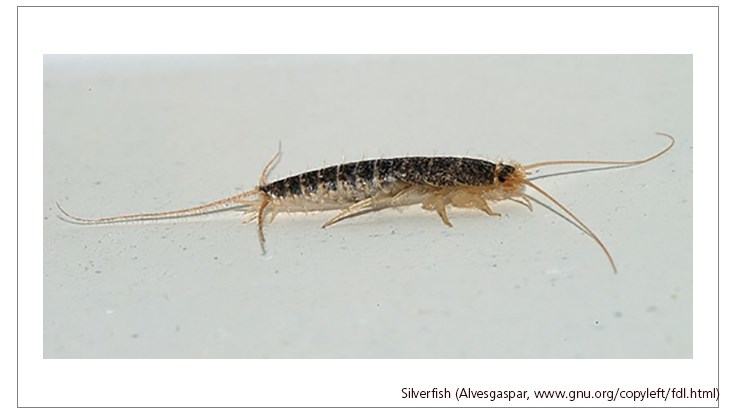Shop By Pest
Researchers Find Hundreds of Arthropod Species in U.S. Homes
January 19, 2016 by Entomology Today

Book lice like the one shown here are a common component of the home fauna, but they are so small that they are rarely noticed. Photo by Matt Bertone.
The first study to evaluate the biodiversity of arthropods in U.S. homes has found that humans share their houses with more than 500 different kinds of arthropods such as insects, spiders, mites, and centipedes.
“This was exploratory work to help us get an understanding of which arthropods are found in our homes,” said Matt Bertone, an entomologist at North Carolina State University and lead author of a paper in the journal PeerJ that describes the work. “Nobody had done an exhaustive inventory like this one, and we found that our homes host far more biodiversity than most people would expect.”
Under an initiative called the “Arthropods of Our Homes,” the researchers visited 50 free-standing houses within 30 miles of Raleigh, North Carolina between May and October of 2012. Going room by room, they collected all of the arthropods they could find, both living and dead.
They identified 579 different arthropod morphospecies — animal types that are easily separable by morphological differences — from 304 different families. Individual homes had, on average, about 100 morphospecies (between 32 and 211) and between 24 and 128 distinct families. The most commonly collected groups of arthropods in the homes were flies, spiders, beetles, ants, and book lice.

Silverfish (shown here: Ctenolepisma longicaudata) are ancient insects that are frequent inhabitants of houses and buildings, where they scavenge a variety of materials for food. Photo by Matt Bertone.
“While we collected a remarkable diversity of these creatures, we don’t want people to get the impression that all of these species are actually living in everyone’s homes,” Bertone said. “Many of the arthropods we found had clearly wandered in from outdoors, been brought in on cut flowers, or were otherwise accidentally introduced. Because they’re not equipped to live in our homes, they usually die pretty quickly.”
For example, researchers found gall midges (Cecidomyiidae) in all 50 homes. But these millimeter-long flies feed on outdoor plants and can’t survive indoors.
“The vast majority of the arthropods we found in homes were not pest species,” Bertone said. “They were either peaceful cohabitants — like the cobweb spiders (Theridiidae) found in 65 percent of all rooms sampled — or accidental visitors, like midges and leafhoppers (Cicadellidae).”
One of the findings that surprised the researchers was that only five of the 554 rooms did not contain any arthropod specimens at all.

One of the most common groups of predators in homes are spiders, and few are more common than cellar spiders. Here a spider in the genus Pholcus feeds on an ant it has captured. Photo by Matt Bertone.
“We think our homes are sterile environments, but they’re not,” Bertone said. “We share our space with many different species, most of which are benign. The fact that you don’t know they’re there only highlights how little we interact with them.”
The research will likely open the door to new lines of scientific inquiry.
“This is only a first glimpse into the species that live in our homes, and more work needs to be done to flesh this picture out,” said co-author Michelle Trautwein. “But these insights give us the opportunity to delve down into some exciting scientific questions. Now that we have a better idea of which species are most common in homes, we can focus on studying them. Do they provide important services that we don’t know about in the ecosystems of our homes? Do [they] host microbial organisms that affect our health, for good or bad? And we can also begin to explore their traits to see if they share evolutionary characteristics that have made them better suited to live with humans.”
“We also plan to assess how a home’s structure, its outdoor environment, and the behavior of its human residents influence the biodiversity of arthropods in the home,” Bertone said.
Click here to read the entire article.

